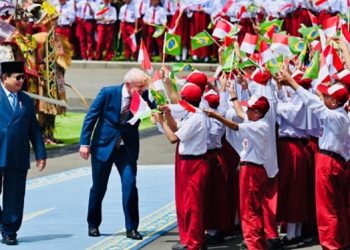Jakarta, Indonesia Sentinel — Indonesia has emerged as Southeast Asia’s leading hub for YouTube content creators, boasting the highest number of high-subscriber channels in the region.
The country is home to over 3,000 YouTube channels with more than one million subscribers. The figure surpassing Vietnam (2,500), Thailand (1,300), the Philippines (450), Malaysia (190), and Singapore (170).
In addition, Indonesia has around 30,000 channels with over 100,000 subscribers, placing it neck-and-neck with Vietnam in this category.
Other Southeast Asian countries fall far behind such as Thailand with 13,000 such channels, the Philippines 6,000, Malaysia 3,000, and Singapore 1,300.
“In total, the six Southeast Asian countries now have more than 7,600 creators with over one million subscribers and 77,000 channels with more than 100,000 subscribers,” wrote Sapna Chadha, Vice President of Southeast Asia and South Asia Frontier at Google, in a blog post published Friday (June 6).
Beyond volume, Indonesia’s creator economy is also showing strong economic growth. Chadha noted a 20% increase in the number of channels earning nine-figure revenues (in local currency) compared to the previous year.
Read Also:
A study by Kantar reveals that 67% of Indonesian viewers regard YouTube creators as trusted sources of information, an important factor in subscriber loyalty.
The trust also extends to consumer behavior. Around 60% of Gen Z in Indonesia trust brands endorsed by YouTube creators, compared to just 46% for brands promoted on other social media platforms.
“YouTube drives nearly four times more purchase intent than other social platforms in the region,” Chadha stated.
“Even amid a flood of content, YouTube’s focus on helpful, high-quality content enables brands to communicate their identity and purpose effectively, and build long-term partnerships with creators based on shared values.”
As Indonesia continues to lead the region both in creators number and viewer trust, its digital content landscape is set to play an increasingly vital role in shaping Southeast Asia’s online economy and cultural influence.
(Raidi/Agung)
























